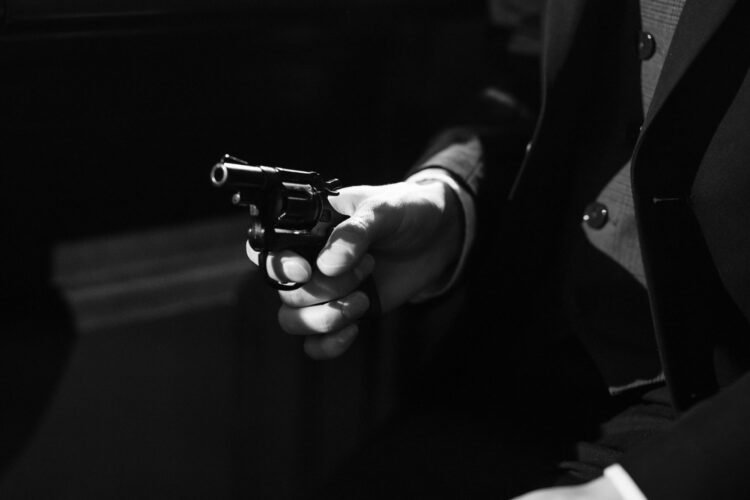

Ian Fleming created the fictional character of James Bond as the central figure for his works. Bond is an intelligence officer in the Secret Intelligence Service, commonly known as MI6. Bond is known by his code number, 007, and was a Royal Naval Reserve Commander. Fleming based his fictional creation on a number of individuals he came across during his time in the Naval Intelligence Division and 30 Assault Unit during the Second World War, admitting that Bond “was a compound of all the secret agents and commando types I met during the war” Among those types were his brother, Peter, who had been involved in behind-the-lines operations in Norway and Greece during the war. Aside from Fleming’s brother, a number of others also provided some aspects of Bond’s make up, including Conrad O’Brien-ffrench, Patrick Dalzel-Job and Bill “Biffy” Dunderdale.

The name James Bond came from that of the American ornithologist James Bond, a Caribbean bird expert and author of the definitive field guide Birds of the West Indies. Fleming, a keen birdwatcher himself, had a copy of Bond’s guide and he later explained to the ornithologist’s wife that “It struck me that this brief, unromantic, Anglo-Saxon and yet very masculine name was just what I needed, and so a second James Bond was born”. He further explained that:
When I wrote the first one in 1953, I wanted Bond to be an extremely dull, uninteresting man to whom things happened; I wanted him to be a blunt instrument … when I was casting around for a name for my protagonist I thought by God, [James Bond] is the dullest name I ever heard.
— Ian Fleming, The New Yorker, 21 April 1962
On another occasion, Fleming said: “I wanted the simplest, dullest, plainest-sounding name I could find, ‘James Bond’ was much better than something more interesting, like ‘Peregrine Carruthers’. Exotic things would happen to and around him, but he would be a neutral figure—an anonymous, blunt instrument wielded by a government department.”

Fleming decided that Bond should resemble both American singer Hoagy Carmichael and himself and in Casino Royale, Vesper Lynd remarks, “Bond reminds me rather of Hoagy Carmichael, but there is something cold and ruthless.” Likewise, in Moonraker, Special Branch Officer Gala Brand thinks that Bond is “certainly good-looking … Rather like Hoagy Carmichael in a way. That black hair falling down over the right eyebrow. Much the same bones. But there was something a bit cruel in the mouth, and the eyes were cold.”

Fleming endowed Bond with many of his own traits, including sharing the same golf handicap, the taste for scrambled eggs and using the same brand of toiletries. Bond’s tastes are also often taken from Fleming’s own as was his behaviour, with Bond’s love of golf and gambling mirroring Fleming’s own. Fleming used his experiences of his espionage career and all other aspects of his life as inspiration when writing, including using names of school friends, acquaintances, relatives and lovers throughout his books.
It was not until the penultimate novel, You Only Live Twice, that Fleming gave Bond a sense of family background. The book was the first to be written after the release of Dr. No in cinemas and Sean Connery’s depiction of Bond affected Fleming’s interpretation of the character, to give Bond both a sense of humour and Scottish antecedents that were not present in the previous stories. In a fictional obituary, purportedly published in The Times, Bond’s parents were given as Andrew Bond, from the village of Glencoe, Scotland, and Monique Delacroix, from the canton of Vaud, Switzerland. Fleming did not provide Bond’s date of birth, but John Pearson’s fictional biography of Bond, James Bond: The Authorized Biography of 007, gives Bond a birth date on 11 November 1920, while a study by John Griswold puts the date at 11 November 1921.
The James Bond series focuses on a fictional British Secret Service agent created in 1953 by writer Ian Fleming, who featured him in twelve novels and two short-story collections. Since Fleming’s death in 1964, eight other authors have written authorised Bond novels or novelisations: Kingsley Amis, Christopher Wood, John Gardner, Raymond Benson, Sebastian Faulks, Jeffery Deaver, William Boyd and Anthony Horowitz. The latest novel is Forever and a Day by Anthony Horowitz, published in May 2018. Additionally Charlie Higson wrote a series on a young James Bond, and Kate Westbrook wrote three novels based on the diaries of a recurring series character, Moneypenny.
The character—also known by the code number 007—has also been adapted for television, radio, comic strip, video games and film. The films are the longest continually running film series of all time and have grossed over US$7.04 billion in total, making it the sixth-highest-grossing film series to date, which started in 1962 with Dr. No, starring Sean Connery as Bond. As of 2020, there have been twenty-four films in the Eon Productions series. The most recent Bond film, Spectre (2015), stars Daniel Craig in his fourth portrayal of Bond; he is the sixth actor to play Bond in the Eon series. There have also been two independent productions of Bond films: Casino Royale (a 1967 spoof starring David Niven) and Never Say Never Again (a 1983 remake of an earlier Eon-produced film, 1965’s Thunderball, both starring Connery). In 2015 the series was estimated to be worth $19.9 billion, making James Bond one of the highest-grossing media franchises of all time.
The Bond films are renowned for a number of features, including the musical accompaniment, with the theme songs having received Academy Award nominations on several occasions, and two wins. Other important elements which run through most of the films include Bond’s cars, his guns, and the gadgets with which he is supplied by Q Branch. The films are also noted for Bond’s relationships with various women, who are sometimes referred to as “Bond girls“.
Thanks for Reading, Always Welcome.
Be Well,
Singhvi Online
Citations: Wiki & Google